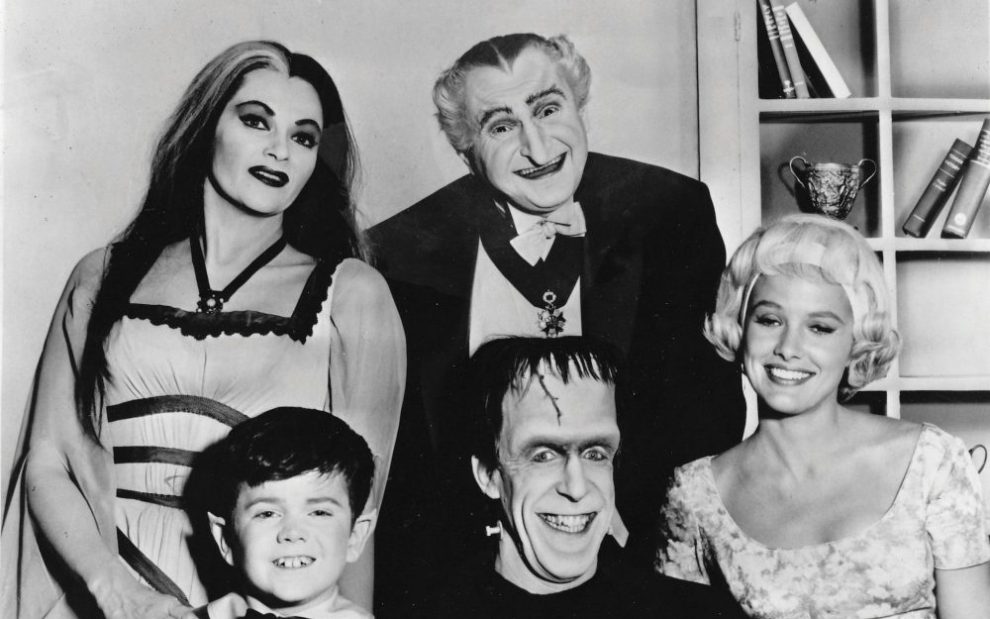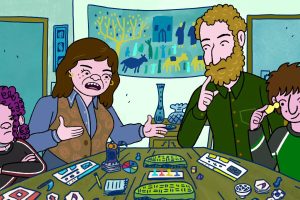Butch Patrick, who portrayed Eddie, the son in a literal family of monsters on the 1960s sitcom The Munsters, recently made a public appearance at a horror-themed pizza parlor not far from my home. Naturally, I had to go—and bring along my Baby Boomer parents, as well as my curious 6-year-old son.
The former child actor graciously celebrated meeting with “three generations of fans!” And I realized what a debt I owe to my folks for introducing me to reruns of the television of their youth, including its family of monsters, allowing me to internalize its celebration of the dark and the weird. This imprinted on me from an early age that normality was nothing to strive for, nor was one’s weirdness anything to hide.
This side of myself received a huge boost in 1991, when director Barry Sonnenfeld’s big-screen adaptation of The Addams Family allowed me to embrace the creepy and kooky for my own generation. This vivid, kinetic film—adapted from the old single-panel Charles Addams cartoons in the New Yorker—depicted a family filled with incredible zest for life, even as they routinely indulged the twisted and morbid.
John Astin, who played Gomez, the Addams patriarch, on the ’60s TV series, has gleefully pointed out in interviews that the Addamses were the healthiest, most well-adjusted family on television. Instead of squabbling dysfunction, the show depicted a father who genuinely enjoyed being around his kids and a married couple who were intensely in love with each other. How shockingly novel!
Of course, the Munsters and the Addamses were just down the dial from each other during the exact same two seasons of mid-’60s TV. One almost has to wonder: What was in the air at that time that the networks saw fit to air not one but two sitcom families notable for their weird, even monstrous nature?
My best guess is that, like so many things, it goes back to our being a widely traumatized society in the 1950s and ’60s, recovering from World War II and pursuing the suburban dream of family, stability, and prosperity—the shadow of which was conformity, materialism, and keeping up appearances. In an America with “Pleasant Valley Sunday” as the widely accepted model, any little crack in the facade threatened the established order. And besides that, what would the neighbors say?
As for the almost unthinkable weirdness of the Munsters and the Addamses, the underlying message was perhaps that it’s madness to pretend or repress the fact that, as the saying goes, there are two kinds of people in the world: normal people and the ones you actually know. We shouldn’t make ourselves miserable trying to conform to any model of perfection. Herman Munster hit the coffin nail on the head when he called the Munsters the “average American family.”
While my own family unit isn’t comprised of a Frankenstein monster, a Dracula father-in-law, and a werewolf child or accompanied by a disembodied hand and a lumbering giant of a butler, we do have our quirks. There’s the daughter who creates elaborate mythologies with intense, awkward interpersonal dramas for basically any set of characters she finds on YouTube. There’s the kindergartener who draws monsters and then ponders which one would hurt most if it ate you—complete with acted-out renditions of each possible experience. And, like the Addamses, there’s even the live-in grandmama.
We don’t try to hide who we are, and I think that’s healthy. One of life’s spiritual challenges is seeking wholeness not by suppressing our shadow side but by integrating it into the whole. The Addamses and the Munsters are robustly in touch with their shadows. There’s no missing it. They don’t shy from who they are, pretend the edges aren’t there, or obsess over what society thinks of them.
These lessons must be more widely broadcast. The news is full of stories of state and local governments striving to suppress the people, activities, and even facts they find objectionable: barring words, books, and even parts of our history from libraries and classrooms. When we run from the ugly parts of our history, we almost guarantee that the monster will catch up with us and rip us apart as a people. And when we deny the existence of entire classes of people, we ourselves become the monsters.
Meanwhile, people, communities, and faith institutions often strive to put forward a vision of perfection. This is a bad habit of the church, in part because it fosters widespread shame in its people and creates a climate in which people closet and compartmentalize edgy parts of themselves, allowing them to fester. (No, not Uncle Fester!) It’s toxic and destructive.
Dietrich Bonhoeffer captured this idea when he said that those who love their idea of community destroy community, but those who love the people around them create community. This was a man who spent his final years surrounded by true monsters, the Nazis—so he should know. How then do we create a more open and honest atmosphere in which we can truly relate to the misfits in our families of faith?
Pope Francis has shown himself to be attuned to this challenge and has offered the merciful response, the capacity to accompany. His outreach to couples in same-sex unions, his affirmation that transgender people can be baptized and even serve as godparents: These are creative, constructive responses, even as the pope’s example has fallen on largely arid ground in the United States. Whether at the church, society, or family level, we can’t put preconditions on who people are before we start to love them.
The Addams family and the Munsters matter because they offer honest, lighthearted modeling of an integrated shadow. We have so few real-life examples of people whose lifestyles have messy edges that at first, we didn’t pay attention.
This is not performative purity-culture asceticism that doubles down on the idea that we should all be miserable. Instead, these shows joyfully embrace the messy and unusual parts of life, rather than hiding them away. Whether portrayed by John Astin in the ’60s or Raul Julia in the ’90s, no wonder Gomez Addams is so fully alive! And no wonder Butch Patrick is still delighted to meet fans in 2024. We find real freedom when we drop the individual and collective burden not to be different.
This article also appears in the October 2024 issue of U.S. Catholic (Vol. 89, No. 10, pages 43-44). Click here to subscribe to the magazine.
Image: CBS Television Network













Add comment